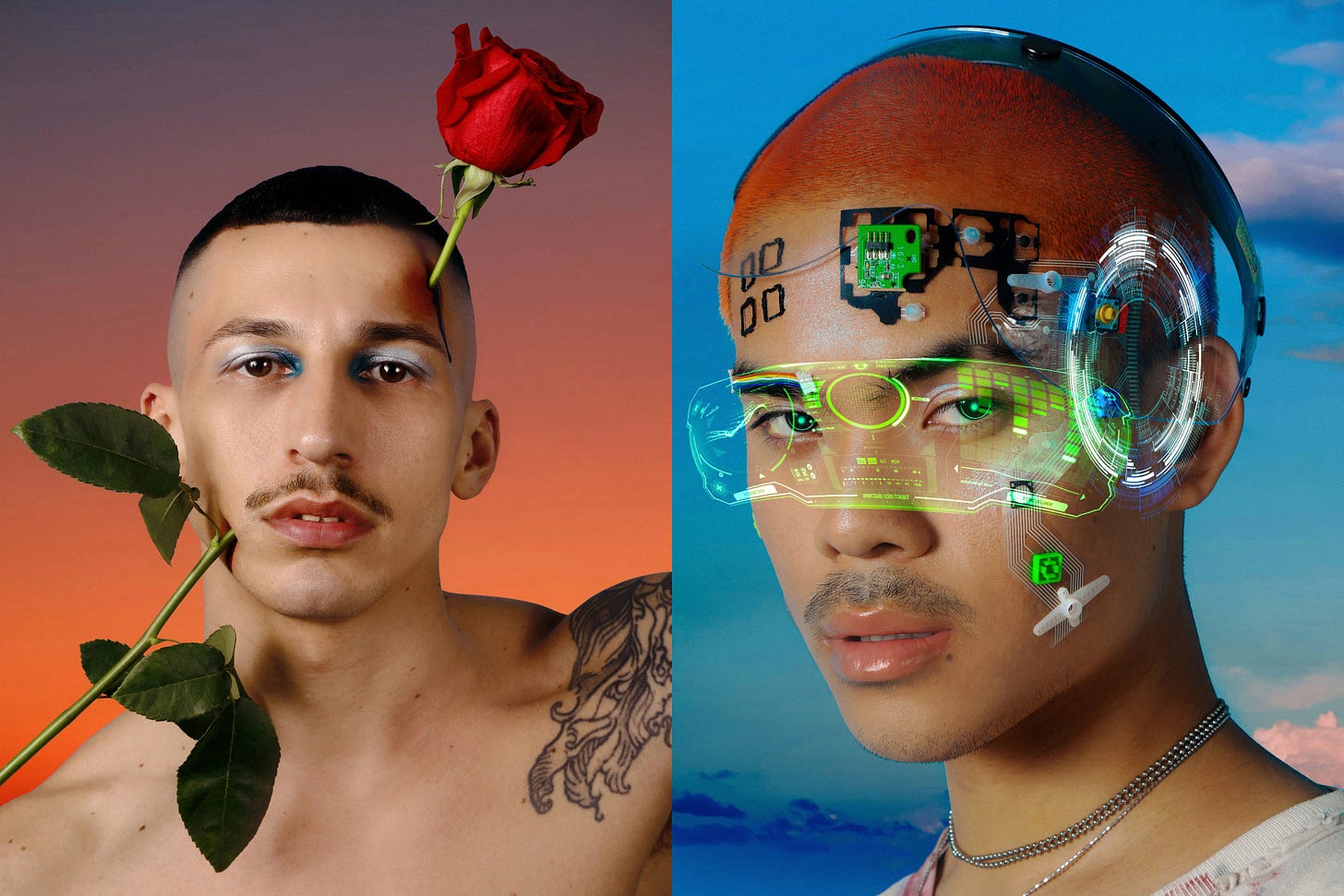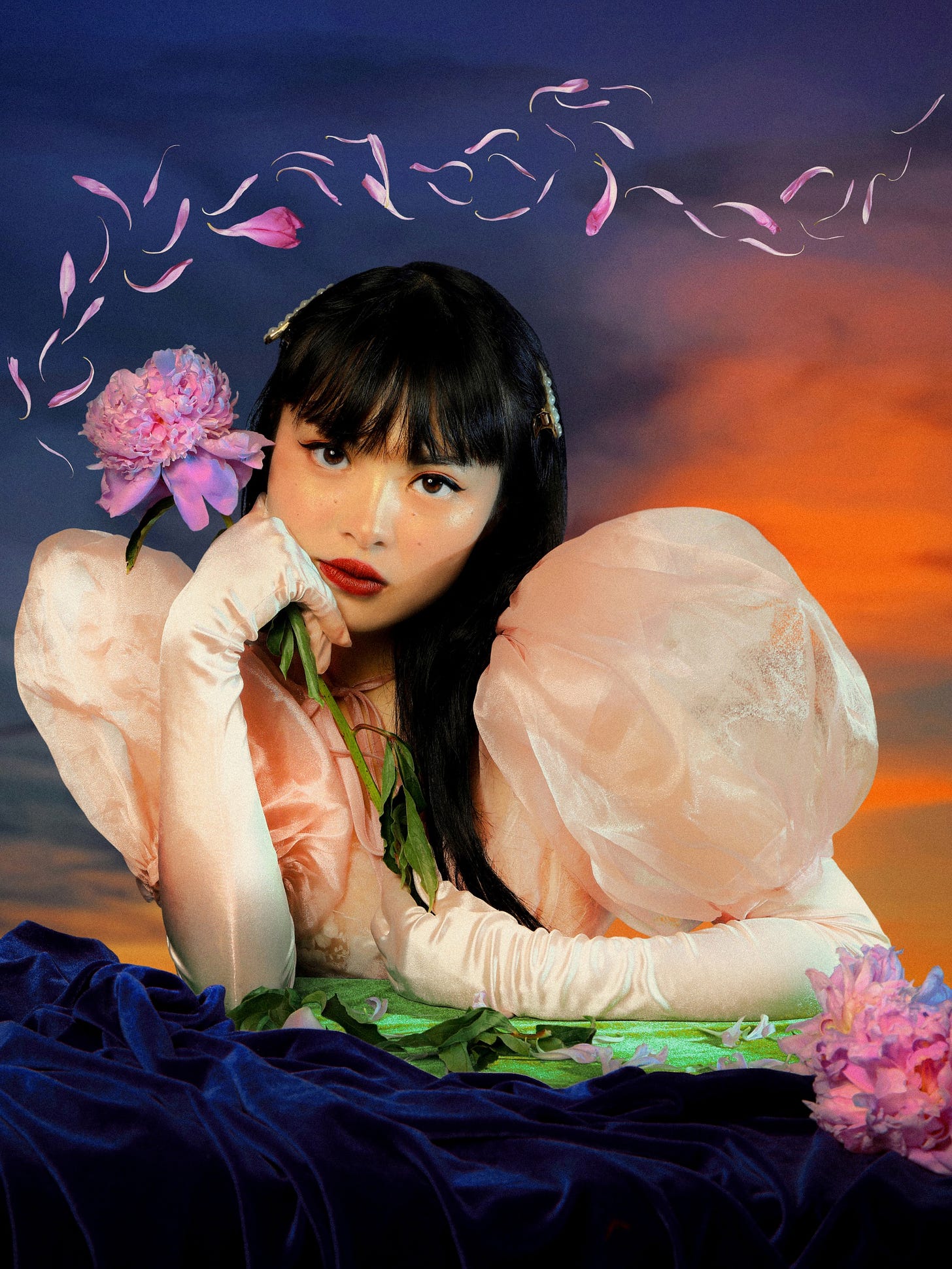An interview with Brian Vu
Also, Queer Computer is back!
Hello — it’s been a while since I last logged on to Queer Computer. Sorry for my absence, I was finishing my master’s thesis. But I’m back with big QC plans that I’m very excited to share with you over the next few issues.
As many of you may know, my relationship with web3 is fairly complicated. The first Queer Computer issue was a rather scathing look at MariCoin — the ‘first LGBTQ cryptocurrency’ (missed opportunity to call it fag-bucks, if you ask me). I then travelled to the metaverse for the first ever Metaverse Fashion Week and discovered a virtual wasteland — not a single person in sight … unless you enter one of the many digital casinos. But I kept my mind open, (and for research purposes) minted my own NFT artwork and then earlier this year, was curated into an NFT exhibition for Pride Month. The exhibition itself was a bit of a grab bag of work — to be real, the fact that they curated me is proof of its grab-bagginess. However, with their bold colours and surreal worlds, Brian Vu’s photographs stood out to me as exceptional artworks in their own right.
Now, with the recent release of their debut photography NFT collection ‘Spectrum’, I sat down with Brian to find out how they got into NFTs in the first place and their thoughts on this whole web3 thing. Enjoy x
To get started, could you tell me who you are, where you are, and what you do.
My name is Brian Vu. I am a photographer and a makeup artist based in New York City, and I mainly focus on doing portraiture, very colourful works, focusing on queer subjects and people of colour.
What is the process behind your photos? How did this style come about?
I guess I started including makeup and these extreme ways of decorating oneself a few years ago, when I photographed like a bunch of club kids who I was friends with in the city and the way that they were doing their makeup was so new and fresh to me. And as a photographer, I was just like, ‘let me take your portrait.’
And it just started snowballing into like a series of works. And I kind of- I myself started experimenting with the makeup. Like, my friends would just give me makeup palettes or brushes, and I would just start from what little I had.
How did you first get started in NFTs?
It was through Laurel Charleston and my friend Ben Zank, who are both artists in New York that I frequently collaborate with. And I was kind of watching them do it on Twitter. But at the same time, I was hearing all this negative news and press about NFTs. So I was pretty conflicted as to like what it was and what I was getting myself into at first.
But I think them giving me more information about it and also bringing me into a community of queer artists on Twitter and Discord that I really enjoyed talking to and having conversations with, where I felt like this was finally a place where artists are supporting artists. It didn't feel like Instagram where everyone was kind of just doing their own thing. There was actually a community behind this movement of art.
There’s just people being super helpful and not gatekeeping and just spreading information and spreading art. What more can you want?
Do you think more queer people should get into the web3 space?
I think so. I think there's a very international kind of queer thing happening in web3 that I never found in the real world. Like, I kind of have my own little bubble happening in New York, but, you know, I'm finally meeting and learning about all these new artists and different mediums that I didn't necessarily put the work into until I joined web3.
I think there's a lot of support happening here, and I would highly recommend it. And also, I hope that queer people can make a living off of their art. Like, that's super important to me and also a big reason why I joined.
As an artist, what has been the benefits of working with NFTs?
I think making money off my art and getting into exhibitions around the world has been really awesome. And just I'm starting to collaborate with more NFT artists, so I feel like it's another type of art world that doesn't already exist. I mean, it exists, but it didn't exist before. And it's all really refreshing and new and it just feels like it's like starting over. It's nice.
How has it been lately since the crypto crash? How have you been feeling it?
I'm not worried to be honest. I'm just going to keep doing what I'm doing and figuring things out. But yeah, right now I guess people aren't collecting art as much. I mean a lot of people lost their money with the bear market. I feel like hopefully it goes back up, which it probably will, who knows how long.
I think I'm going to keep with it. Like I'm having fun and I want to also just have my work on the blockchain. Like it's important for queer artists to have their work permanently online, so that no one can take it down. I feel like queer people and queer artists have always been kind of shelved from history. And now it's like, you can't do anything about queer artists minting work, it’s just going to always be there. So, I think that brings power back to queer artists, you know.
Check out more of Brian’s work on Instagram and Twitter. They’ve photographed the likes of Aquaria, Julio Torres and Kim Petras, plus many more amazing queer artists.






